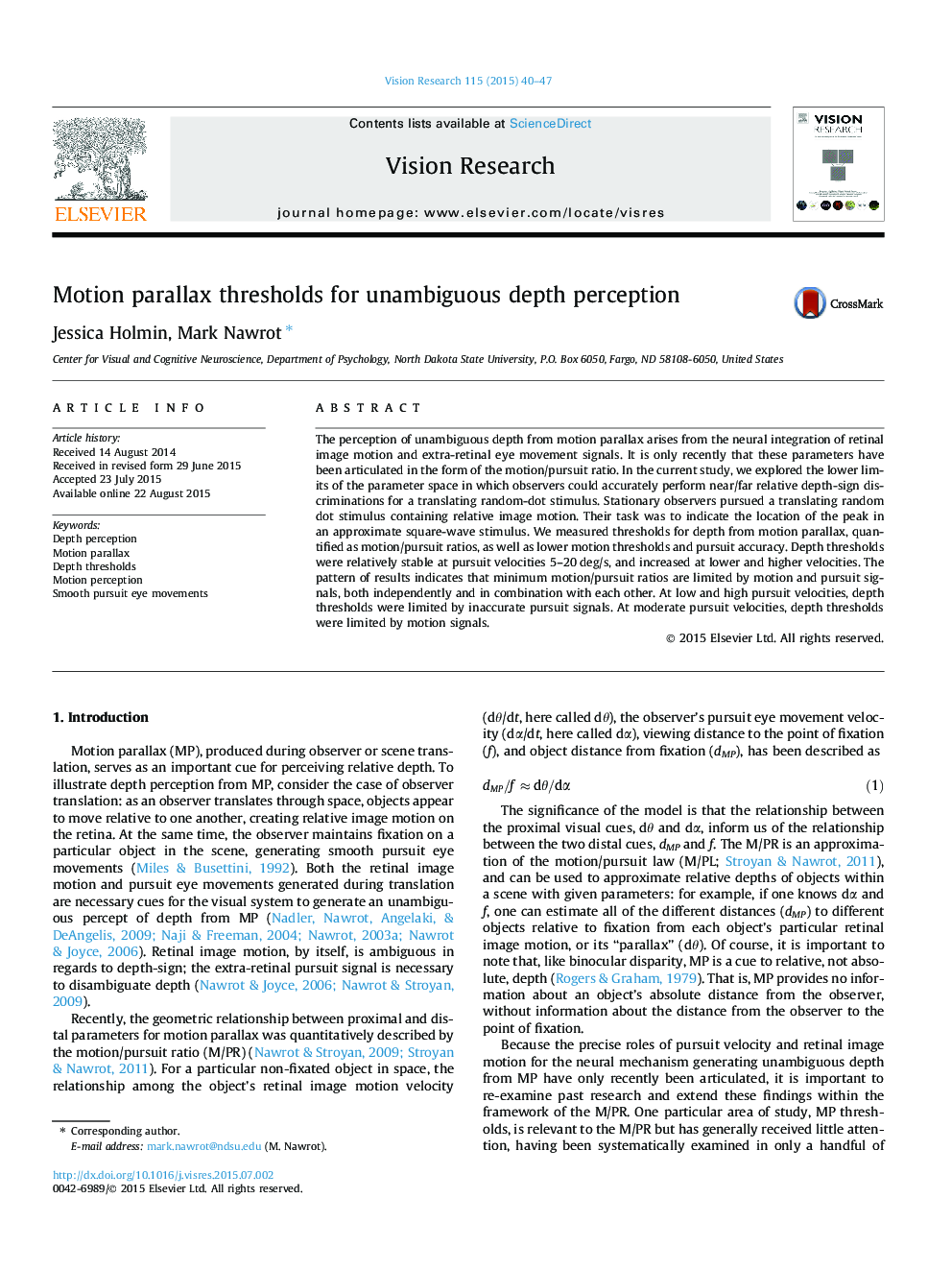| Article ID | Journal | Published Year | Pages | File Type |
|---|---|---|---|---|
| 6203126 | Vision Research | 2015 | 8 Pages |
â¢Motion parallax thresholds are stable at moderate pursuit velocities.â¢Thresholds at moderate pursuit velocities are limited by motion processing.â¢Non-optimal pursuit signals limit thresholds at high and low pursuit velocities.â¢Motion parallax thresholds are comparable to binocular disparity thresholds.
The perception of unambiguous depth from motion parallax arises from the neural integration of retinal image motion and extra-retinal eye movement signals. It is only recently that these parameters have been articulated in the form of the motion/pursuit ratio. In the current study, we explored the lower limits of the parameter space in which observers could accurately perform near/far relative depth-sign discriminations for a translating random-dot stimulus. Stationary observers pursued a translating random dot stimulus containing relative image motion. Their task was to indicate the location of the peak in an approximate square-wave stimulus. We measured thresholds for depth from motion parallax, quantified as motion/pursuit ratios, as well as lower motion thresholds and pursuit accuracy. Depth thresholds were relatively stable at pursuit velocities 5-20Â deg/s, and increased at lower and higher velocities. The pattern of results indicates that minimum motion/pursuit ratios are limited by motion and pursuit signals, both independently and in combination with each other. At low and high pursuit velocities, depth thresholds were limited by inaccurate pursuit signals. At moderate pursuit velocities, depth thresholds were limited by motion signals.
